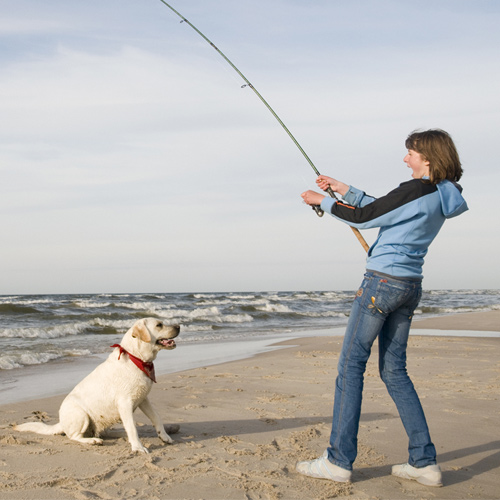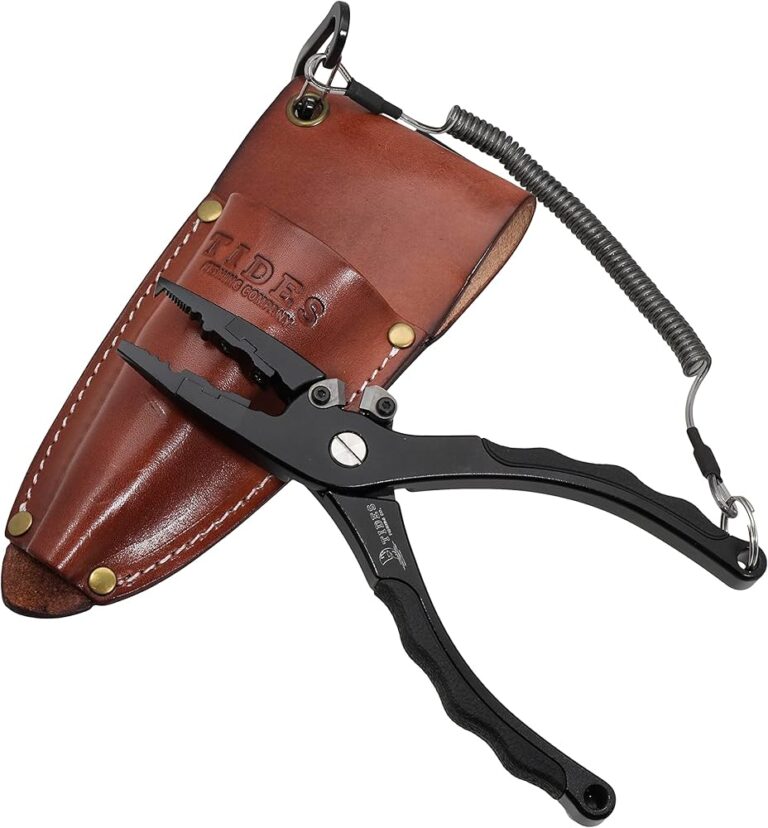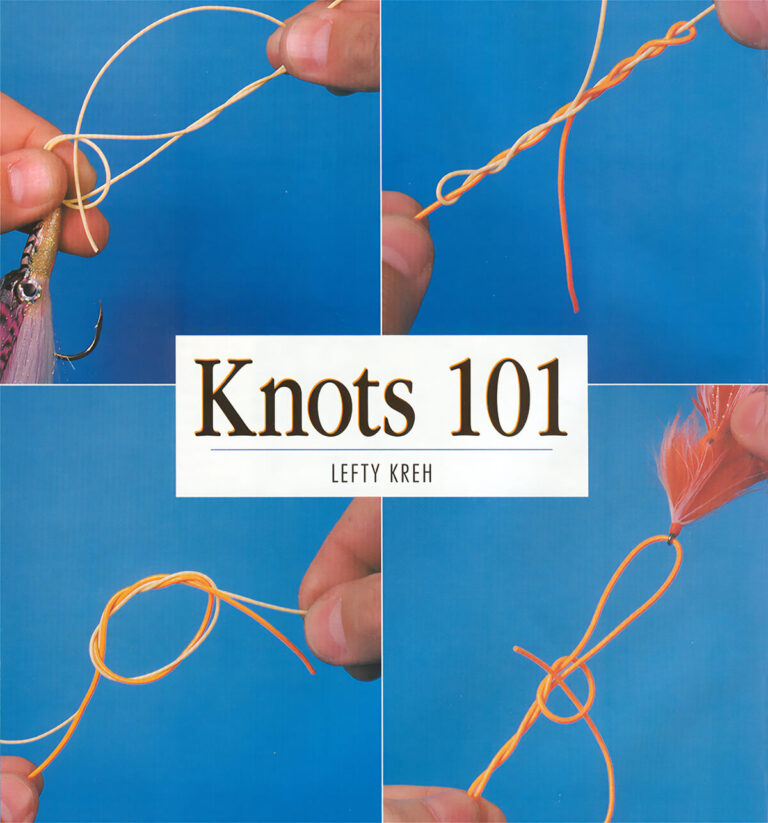Expert Surf Fishing Tips to Learn: Catch More Fish Today
Surf fishing is exciting and rewarding. It connects you with nature and challenges your skills.
Imagine standing on the shore, feeling the wind and the thrill of the catch. Surf fishing offers a unique experience, different from other types of fishing. It’s not just about catching fish; it’s about the adventure and the techniques you use.
Learning expert surf fishing tips can greatly improve your success and enjoyment. Whether you’re new or experienced, these tips can help you catch more fish and have more fun. Dive into the world of surf fishing and discover how to make the most of your time by the water.
Choosing The Right Gear
Choosing the right gear is crucial for a successful surf fishing experience. The right equipment can make your fishing trip more enjoyable and productive. Here are some expert tips on selecting the best rods, reels, lines, leaders, baits, and lures for surf fishing.
Rods And Reels
Rods are the backbone of your fishing gear. For surf fishing, longer rods, typically 9 to 12 feet, are preferred. They help you cast farther and handle larger fish. Look for a rod with a strong backbone and a sensitive tip.
Reels should match your rod. Spinning reels are common for surf fishing due to their ease of use. Choose a reel with a high line capacity and a smooth drag system. Saltwater-resistant features are a bonus to prolong the reel’s life.
Lines And Leaders
Your choice of lines and leaders can impact your fishing success. Braided lines are popular for their strength and sensitivity. A 20-30 lb test line is often sufficient for most surf fishing scenarios.
Leaders, usually made of fluorocarbon, are crucial. They are less visible to fish and provide extra abrasion resistance. A typical leader length ranges from 18 to 36 inches. Use a leader strength that matches your main line.
Bait And Lures
Selecting the right bait and lures is essential to attract fish. Natural baits like sand crabs, shrimp, and squid are effective. They mimic the natural prey of many surf fish species.
Lures such as spoons, plugs, and soft plastics can also be effective. Choose lures that mimic the movement of baitfish. Match the color and size of your lures to the local baitfish for best results.

Credit: www.ncaquariums.com
Understanding Tides And Currents
Understanding tides and currents is crucial for surf fishing success. These natural forces affect fish behavior. By knowing how tides and currents work, you can improve your chances of catching fish.
Best Times To Fish
Fish are more active during certain times. The best times to fish are usually during tide changes. Incoming and outgoing tides bring food to the fish, making them more likely to bite.
| Tide | Activity |
|---|---|
| High Tide | Fish move closer to shore |
| Low Tide | Fish move to deeper waters |
- Early morning high tide is ideal.
- Late afternoon low tide can also be productive.
Reading The Water
Reading the water helps you find the best spots. Look for areas where currents meet. These areas often have more fish.
- Look for breaking waves. Fish often gather here.
- Identify channels and troughs. Fish use these as highways.
- Watch for changes in water color. Darker water can mean deeper spots.
Use these tips to understand tides and currents. This will help you become a better surf fisher.
Identifying Hotspots
Identifying hotspots is crucial for successful surf fishing. Hotspots are areas where fish are more likely to gather. Finding these areas increases your chances of catching fish. To identify hotspots, you need to understand the structure and features of the beach. Local knowledge can also be very helpful.
Structure And Features
Look for natural structures on the beach. These include sandbars, troughs, and points. Sandbars create shallow areas where fish can feed. Troughs are deeper areas between sandbars where fish often swim. Points are areas where the beach juts out into the water. Fish gather here to feed on baitfish.
Observe the waves and currents. Waves breaking over sandbars create white water. This is a sign of a sandbar. Fish use the white water as cover. Currents can carry food and attract fish. Look for areas where currents meet or change direction.
Local Knowledge
Talk to local anglers. They know the best fishing spots. Ask about their favorite spots and why they like them. Learn about the local fish species and their habits. This information can help you choose the right spot.
Visit local bait shops. The staff can give you valuable tips. They know where fish are biting. They can also suggest the best bait and tackle. Join local fishing forums and groups. These communities share their experiences and tips. You can learn a lot from them.
Casting Techniques
Surf fishing requires a blend of skill and technique to succeed. One of the essential skills every surf angler needs is casting. Your casting technique can make or break your fishing experience. Whether you’re aiming for distance or accuracy, mastering these techniques is vital. Below, we’ll explore some expert tips on casting techniques.
Distance Casting
Distance casting is crucial for reaching deep waters where fish often gather. To achieve longer casts, follow these steps:
- Use a long rod: A rod length of 10-12 feet is ideal.
- Proper stance: Stand with your feet shoulder-width apart.
- Backswing: Make a full backswing to load the rod.
- Follow through: Ensure a smooth follow-through motion.
These tips help maximize your casting distance. Remember, practice makes perfect.
Accuracy And Precision
Accuracy is just as important as distance. Precise casting increases your chances of landing a catch. Here are some tips for improving accuracy:
- Focus on a target: Pick a specific spot to aim for.
- Controlled motion: Avoid sudden jerks during the cast.
- Consistent practice: Regular practice enhances muscle memory.
- Adjust for wind: Compensate for wind to maintain precision.
Accurate casting can lead to more successful fishing trips. Practice these techniques to improve your surf fishing skills.
Bait Presentation
Successful surf fishing often hinges on how well you present your bait. Bait presentation can make the difference between a quiet day on the shore and a cooler full of fish. Whether you use natural or artificial baits, understanding how to present them effectively is key.
Natural Baits
Natural baits like shrimp, clams, and sandworms attract many fish. They emit scents that fish find irresistible. Ensure your bait looks lively and fresh. Hook the bait in a way that allows it to move naturally in the water. This mimics the movements of live prey and draws fish in.
For shrimp, hook them through the tail or the head. This keeps them secure and natural-looking. Clams can be tougher to hook but are effective. Use a small piece and thread it onto the hook. Sandworms should be hooked once through the middle. This lets them wiggle and attract fish.
Artificial Baits
Artificial baits can be just as effective as natural baits. They come in various shapes, sizes, and colors. Choose baits that mimic the local prey fish eat. Soft plastics, jigs, and spoons are popular choices.
Soft plastics should look like small fish or worms. Use a slow, steady retrieve to mimic natural movements. Jigs work well in deeper waters. Let them sink and then jerk them up to imitate injured prey. Spoons flash in the water, drawing attention. Reel them in with a steady pace for best results.
Always consider the local fish species and their habits. Tailor your bait presentation to these factors for the best success.
Reading The Beach
Reading the beach is a crucial skill for surf fishing. It helps you find the best spots where fish are likely to be. By understanding the beach’s structure, you can increase your chances of a successful catch. This involves observing sandbars, troughs, and wave patterns.
Sandbars And Troughs
Sandbars are underwater ridges parallel to the shore. They often hold fish looking for food. Troughs are deeper areas between sandbars or the shore. Fish use these troughs as travel routes. Look for changes in water color to spot them. Lighter areas indicate sandbars. Darker areas show troughs.
Wave Patterns
Wave patterns give clues about underwater features. Waves break over shallow areas like sandbars. Watch where the waves break and form white water. This can help you locate sandbars and troughs. Pay attention to areas where waves don’t break. These spots might be deeper and have fish.
Handling And Releasing Fish
Handling and releasing fish properly is crucial for maintaining healthy fish populations. It ensures that fish survive after being caught and released. Here are some expert tips to help you handle and release fish safely.
Proper Techniques
Use wet hands or gloves when handling fish. This protects their slime coat. The slime coat is essential for their health.
- Support the fish with both hands. One hand under the belly and the other at the tail.
- Hold the fish horizontally. This reduces stress and potential injury.
- Keep the fish in the water as much as possible. This helps them breathe.
- Use barbless hooks. They are easier to remove and cause less damage.
- Remove the hook gently. Use pliers or a hook remover tool.
Conservation Tips
Follow these tips to ensure the fish you release have the best chance of survival.
- Avoid handling fish with dry hands. Dry hands can remove their protective slime layer.
- Do not squeeze the fish. Squeezing can damage internal organs.
- Minimize the time fish are out of the water. Aim for less than 30 seconds.
- Release fish in calm water. This helps them recover from the stress.
- Revive tired fish. Hold them in the water until they swim away on their own.
| Do’s | Don’ts |
|---|---|
| Wet your hands before handling fish. | Hold fish by the gills or eyes. |
| Use barbless hooks. | Keep fish out of water too long. |
| Support fish properly. | Squeeze fish tightly. |
By following these tips, you can ensure that the fish you catch have the best chance of survival. Proper handling and releasing techniques are vital for conserving fish populations and ensuring future fishing opportunities.

Credit: www.takemefishing.org
Safety Tips
Surf fishing can be a rewarding experience, but safety should always come first. Understanding the risks and taking necessary precautions can prevent accidents and ensure a fun, successful fishing trip. Here are some essential safety tips for surf fishing.
Weather Awareness
Checking the weather before heading out is crucial. Sudden changes in weather can pose serious risks. Strong winds, lightning, or rough seas can create dangerous conditions.
- Check weather forecasts regularly.
- Avoid fishing during storms or high winds.
- Be aware of tide changes and their timings.
Understanding the weather helps you prepare and stay safe. It’s always better to reschedule your trip than to risk bad weather.
Protective Gear
Wearing the right protective gear is essential for your safety. The right gear not only protects you from the elements but also from potential injuries.
| Gear | Purpose |
|---|---|
| Life Jacket | Prevents drowning in case of an accident. |
| Waders | Protects from cold water and sharp objects. |
| Sun Protection | Prevents sunburn and heatstroke. |
| Footwear | Protects feet from sharp objects and provides grip. |
Always ensure your gear is in good condition. Replace any damaged items before your trip. Safety is paramount, so do not compromise on protective gear.

Credit: www.amazon.com
Frequently Asked Questions
What Is The Best Time For Surf Fishing?
The best time for surf fishing is during dawn and dusk. These times are when fish are most active and feeding.
What Bait Is Best For Surf Fishing?
Live bait such as sand crabs, shrimp, and mullet work best. Artificial lures that mimic these baits are also effective.
How Do Tides Affect Surf Fishing?
Tides significantly affect surf fishing. Incoming tides bring fish closer to shore, making them easier to catch.
What Gear Do I Need For Surf Fishing?
Basic surf fishing gear includes a sturdy rod, reel, and tackle. Waders and a tackle box are also helpful.
Conclusion
Surf fishing offers great excitement and relaxation. With these tips, success awaits. Remember, patience and practice lead to better results. Gear up properly and respect the environment. Enjoy the waves and the thrill of the catch. Happy fishing!



